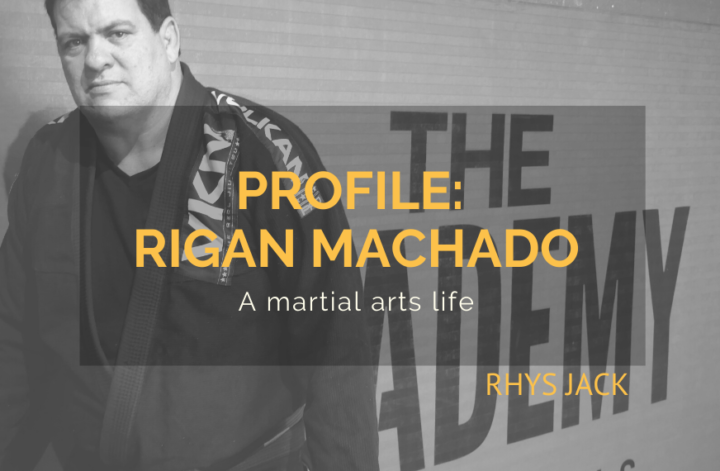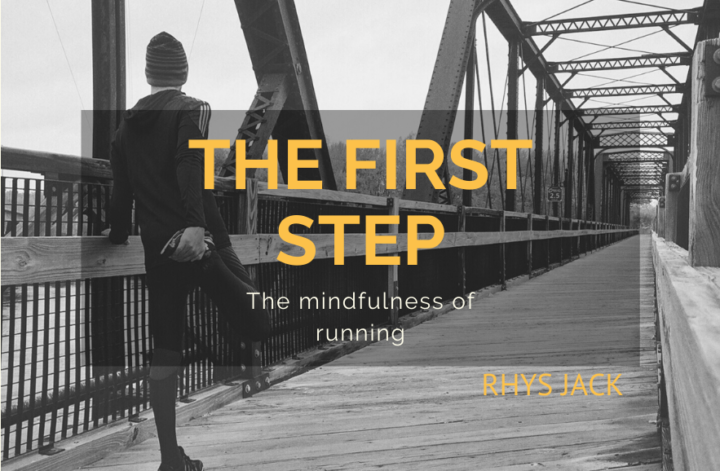“The art of Jiu-Jitsu is worth more in every way than all of our athletics combined”
President Theodore Roosevelt, 1905
Taking up Brazilian Jiu-Jitsu almost 10 years ago was one of the best decisions I’ve made in my life. The continual lessons, the friendships, the confidence and the discipline that this way of life teaches people is something I try to explain to anyone interested in learning the art. But it’s only something you really begin to understand and to love by stepping onto the mat and trying it yourself.
If you are a beginner white belt, contemplating taking up BJJ, or have been training for some time, below are some of the key lessons I’ve found which are valuable at the beginner’s phase of white belt, and which will go with you as you move through the belt system.
As you start to read them you will probably notice these lessons transition fairly well into other areas of life. I’ve found the lessons I learn in Jiu-Jitsu are also applicable to things like writing, speaking and problem-solving. The concepts are generally applicable to any challenge that you want to face in life.
1. Bring A Fresh Set of Eyes.
In BJJ, the white belt phase usually lasts for around 18-24 months or longer, but there is no set time to how long you can or should be at this stage. In fact, it’s probably better to think of yourself as never leaving this stage. The white belt phase is the greatest period of learning you will ever experience in Jiu-jitsu because you are beginning with a truly fresh set of eyes every time you learn something new on the mat. Keeping this approach consistent in your training will help you no matter what belt or grade you are. When you begin as a white belt, you can’t help but see things from this perspective.
“I keep a white belt mentality that I can learn from anyone, anywhere at any time.”
Georges St-Pierre
BJJ can be like walking into a jungle, there’s a lot to take in, a lot of interesting and cool places out there to explore and also some potentially dangerous things to be aware of. The more you become accustomed to the environment, the more you will begin to relax into it, to notice how the jungle works and come to a fuller understanding of how crazy and amazing it really is.
2. Understand Why You Are Stepping Into the Unknown?
White belt is the first step into that jungle. But before you turn up to your first class, before the hard learning and struggle begins there is first a decision. A need that you feel inside that you want to explore. You want to learn, to become something different, to grow; whether that be in your ability to protect yourself and those around you, to have the confidence to know you can handle yourself in any situation in the world, to get physically fit, to improve your self-knowledge, to switch your mind off from a long day of staring at a computer screen or to take out your frustrations on some unsuspecting training partners.
The reason why you decided to begin is important, it gives you the initial fuel you need to get up and get started. Sometimes you will go through periods in training where you don’t feel motivated, or feel like you’re plateauing, or questioning when you will progress further. That’s when having a clear reason why you are doing it becomes helpful. Ultimately, the longer you train, all of the reasons why will start to combine as it becomes something you instantly do, and becomes an automatic way of life, rather than another thing you do.
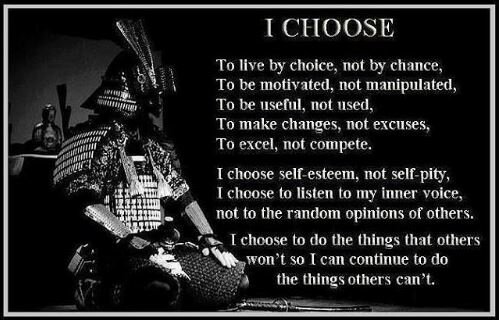
3. Learn the Warm-Up
The more I train and the older I get the more I realise the importance of the warm-up. In Jiu-Jitsu this usually involves the most fundamental and basic movements that warm up the body but are also important to improving your technique. It’s a great investment to study these movements closely; moves like hip escapes, forward and backward rolls, shrimping, bear crawls, sprawling, hand fighting – are the tools that you will use frequently as you move further into the jungle.
“Discipline and consistency. I owe these two factors all have attained in my life. Things have never happened overnight. Results have appeared as a consequence of decades-long toil. It is necessary to persist.”
Carlos Gracie Jr.
4. Understand Rushed Technique Isn’t Good Technique
The next step is applying these basic movements to learning the techniques. Typically an instructor will move through a move or series of moves in each lesson and through a curriculum over a longer period of time. The technique part of a training session is an opportunity to watch an expert or advanced student do the move, and then try it out for yourself on a partner.
One habit I found myself falling into as a white belt, and which I see lots of white belts doing in the early stages is rushing the technique as soon as they see it, trying to make it fast and fluid like the instructor has shown. But I find this is not an efficient approach when you are learning a new move.
I make a point when learning a new technique for at least the first few repetitions to go through the move slowly, to feel every movement, feel the balance, positioning, leverage points and try to understand how my partner’s balance and movement is impacting that as well, then once this is clear, I progressively drill and repeat the technique to get sharper and sharper at it. That way, in the rush of a real sparring situation, the balance and positioning that is required to execute the skill are intuitively in my mind and body and it’s easier to apply automatically in a ‘real-life’ situation. Drilling techniques is all about slowing down and getting it right before you try it in a sparring or competition situation.
“Just as the child must trust his mother, the white belt must believe in the good will of his instructor. There will be a time for questioning, but for now he must focus and train.”
Saulo Ribeiro
5. Recognise the Role of Respect
As you develop in BJJ, the realisation of the role that respect plays on the mat will begin to sink in. The training mat is a place to learn and train. It isn’t the UFC octagon, it isn’t tai-chi class either, it’s a place you can find the challenge you need. Respect is the foundation of that place.
Simple things like shaking hands, bumping fists, bowing at the start or end of class, or before a match, and things like helping to clean the mats after class are all small signs of respect, for the people you train with and also the place you are training in. It’s an important lesson because although you are learning how to be an all-round dangerous human it’s the people and place you train in which are helping you become that.
6. Remove Expectations
White belt is specifically about learning, but also unlearning. Breaking down the expectations of what you think you’ll be good at is a key lesson of this phase, because to begin with, you probably won’t be good at very much. You will be submitted by people who are smaller and much less intimidating then you, and you will feel helpless as every move you make appears to be just another invitation for some scrawny guy to beat you up a little bit more and leave you asking “how the hell did he do that?”.
It’s all part of the process. White belt is as much about learning how to deal with being humbled as anything else. Because you will become almost exclusively accustomed to the feeling for the first 6-12 months. Enjoy the process, don’t fight it, treat it as an opportunity to grow.
Learn to tap early and frequently, and to ask questions when you are submitted about what you could improve or how they got you with that particular position or submission. As you get rid of the expectations you had for yourself, you learn not to have expectations of what others are capable of. You expect the unexpected.
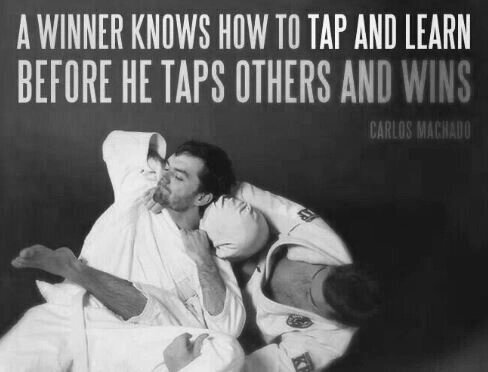
7. Find the Comfortable Uncomfortable
As you are being submitted on the mats frequently and in a variety of new positions, you will find yourself in situations that are very uncomfortable. It’s very common to see beginners in their first few lessons lashing out, struggling or flailing around wildly on the mats. This is potentially dangerous and can lead to injuries to both yourself and training partners.
Understanding the panic of being in an uncomfortable and seemingly dangerous position is a key lesson. Slowly as you experience these positions you begin to realise you will be OK. You relax and begin to problem solve your way out of these positions rather than rolling around fighting desperately and wasting more energy.
Again, being uncomfortable is another theme of BJJ that exists in all ranks and will never go away. But what you will learn in the beginners phase is to be comfortable in the uncomfortable. To embrace those situations that once brought panic or fear.
“Where there’s discomfort, there’s fear, In these very tough positions, you’re in a little piece of hell. And through this daily suffering, you learn to survive in these situations. You have to find comfort in the uncomfortable situations. You have to be able to live your worst nightmare. Jiu-Jitsu puts you completely in the moment where you must have complete focus on finding a solution to the problem. This trains the mind to build that focus, to increase your awareness, your capacity to solve problems. Sometimes, you don’t have to win. You cannot win. But that has nothing to do with losing.”
Rickson Gracie
8. Pay Attention to Rest and Recovery & Avoid Burnout
As much as the warm-up is important, what you do after you finish on the mat is just as important. BJJ is an art that can be practised at just about any age if the right approach to rest and recovery is adopted.
One of the key mistakes I see white belts who have just taken up the sport falling into is overtraining and eventually burning out. They are so eager to learn everything, they train like a pro for a period of time, but after 12 months or reaching a certain belt, they disappear from the mats.
What you want to find is a routine that is sustainable for you over a long period. To get to black belt is at least a ten year journey, and many black belts say once you get there, that’s when you really begin to start to learn Jiu-Jitsu. Looking after your mind and body is important and figuring out what you need to keep training consistently for a long period is what you will need to figure out.
The journey keeps on going but you have to be in one piece physically and mentally in order to continue.
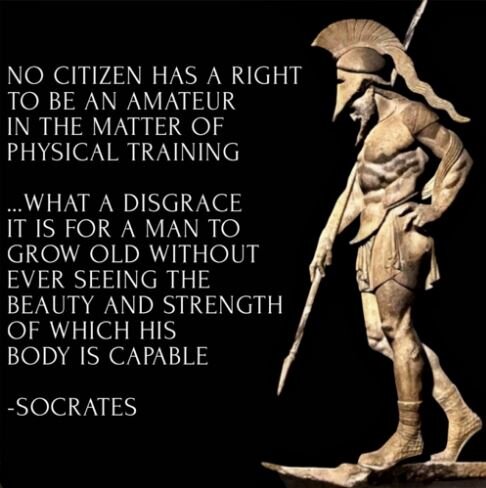
9. Enjoy it
Learning BJJ is an incredibly beneficial and rewarding martial art to undertake. The beginner’s phase is where you will make the greatest leaps forward in the shortest space of time and start to put the core, foundational pieces of your toolkit in place that will help you move forward in the next phase. The most important lesson is to enjoy it for what it is. You are alive and walking through the jungle.
Enjoy the process and happy rolling.

